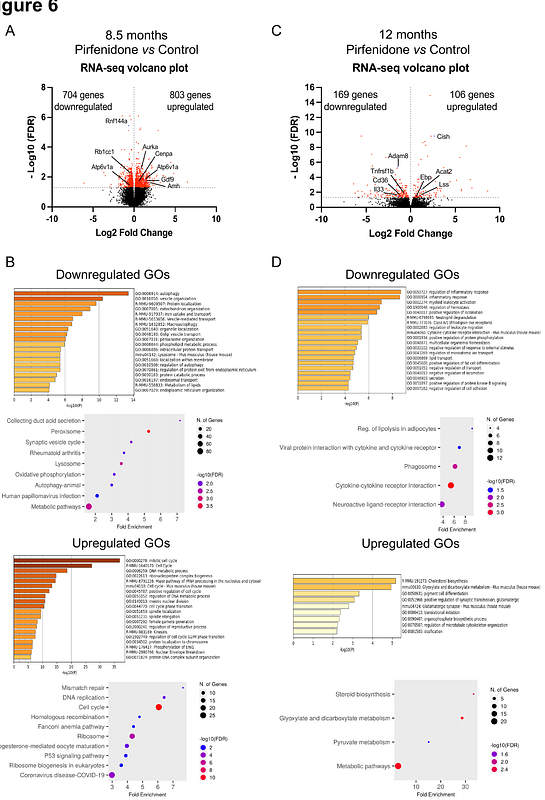Systemic low-dose anti-fibrotic treatment attenuates ovarian aging in the mouse

Systemic low-dose anti-fibrotic treatment attenuates ovarian aging in the mouse
Amargant i Riera, F.; Vieira, C.; Pritchard, M.; Duncan, F.
AbstractThe female reproductive system is one of the first to age in humans, resulting in infertility and endocrine disruptions. The aging ovary assumes a fibro-inflammatory milieu which negatively impacts gamete quantity and quality as well as ovulation. Here we tested whether the systemic delivery of anti-inflammatory (Etanercept) or anti-fibrotic (Pirfenidone) drugs attenuates ovarian aging in mice. We first evaluated the ability of these drugs to decrease the expression of fibro-inflammatory genes in primary ovarian stromal cells. Whereas Etanercept did not block Tnf expression in ovarian stromal cells, Pirfenidone significantly reduced Col1a1 expression. We then tested Pirfenidone in vivo where the drug was delivered systemically via mini-osmotic pumps for 6-weeks. Pirfenidone mitigated the age-dependent increase in ovarian fibrosis without impacting overall health parameters. Ovarian function was improved in Pirfenidone-treated mice as evidenced by increased follicle and corpora lutea number, AMH levels, and improved estrous cyclicity. Transcriptomic analysis revealed that Pirfenidone treatment resulted in an upregulation of reproductive function-related genes at 8.5 months and a downregulation of inflammatory genes at 12 months of age. These findings demonstrate that reducing the fibroinflammatory ovarian microenvironment improves ovarian function, thereby supporting modulating the ovarian environment as a therapeutic avenue to extend reproductive longevity.


